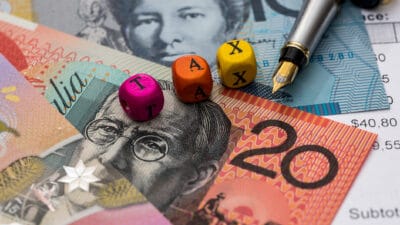Being able to live off dividends may sound like a dream to most people. Wouldn't it be amazing if our investments could grow their passive income so much that it could entirely replace the wage?
Owning shares is a very simple strategy – businesses make a profit every year and can send plenty of it to investors as a dividend. We don't need to run the business or make any operational decisions. We just need to have a bank account so the company can send its payouts.
Of course, receiving tens of thousands of dollars annually is easier said than done. It could take a lot of time to get to the desired goal.
But, there is a process we can follow to make it happen, and there are ways to (sensibly) accelerate the journey.
Save
We can't get around the fact that, as the saying goes, money makes money. To build a dividend-paying portfolio, we need to save money ourselves to invest it.
Plenty of Aussies are probably going through a tough time at the moment due to a high cost of living, so not everyone may be in a position to invest much at the moment or even do any savings.
So, somehow, Aussies who want to replace their wage with passive dividend income need to spend less than they earn and save that money for investment.
There may or may not be different ideas or choices people can utilise to increase their income or reduce spending.
But, if we can regularly save $500 per month, $1,000 per month or even more, we can start the financial snowball rolling towards financial independence.
Invest
After we've gathered some savings, we can start putting the money into the ASX share market.
I think the most important element of the investment part is to choose ASX shares that can increase their underlying value at a solid pace over the long term. This normally means they can grow earnings and/or increase the asset (balance sheet) value of the business.
The easiest way to invest in the share market is to invest in diversified exchange-traded funds (ETFs) that give broad access to a portfolio of shares. I'm thinking of ones like Vanguard MSCI Index International Shares ETF (ASX: VGS), VanEck MSCI International Quality ETF (ASX: QUAL), VanEck Morningstar Wide Moat ETF (ASX: MOAT) and Betashares Global Quality Leaders ETF (ASX: QLTY).
We can use ETFs to build portfolio value up to a certain dollar level and then possibly replace (sell) them with higher-yielding ASX dividend shares.
Or, instead of switching investments, we can just sell a small portion (such as 3% or 4%) of our ETF holding each year to unlock a cash flow/passive income yield and use that cash. It's quite possible the long-term capital returns of the ETF could be stronger than the amount sold, leading to a rising portfolio value.
Another option is to buy high-quality, growing ASX dividend shares from the start. I'm referring to ones that could deliver good total returns that may be able to provide good dividends today and in the future, as well as capital growth over the years. I'd redirect any received dividends into buying more shares.
I'm thinking of good ASX dividend shares like Washington H. Soul Pattinson and Co. Ltd (ASX: SOL), Brickworks Limited (ASX: BKW), MFF Capital Investments Ltd (ASX: MFF) and Wesfarmers Ltd (ASX: WES).
Enjoy the passive dividend
As the portfolio gets bigger, Aussies on their journey would see their portfolio capable of producing more passive income each year. First, it'll reach $1,000 in annual income, then $2,000, eventually reaching $10,000, $20,000, and even more.
If the portfolio pays a dividend yield of 5%, then a $1 million portfolio would pay $50,000 of annual passive income.
According to the Moneysmart compound calculator, investing $1,000 per month would grow into $1 million in less than 24 years if it grew by 10% per annum. If the portfolio grew at a faster rate than 10% per year, it'd take even less time, which is why I'm a big advocate for owning high-quality ASX shares/investments that can deliver good returns over the long term.









